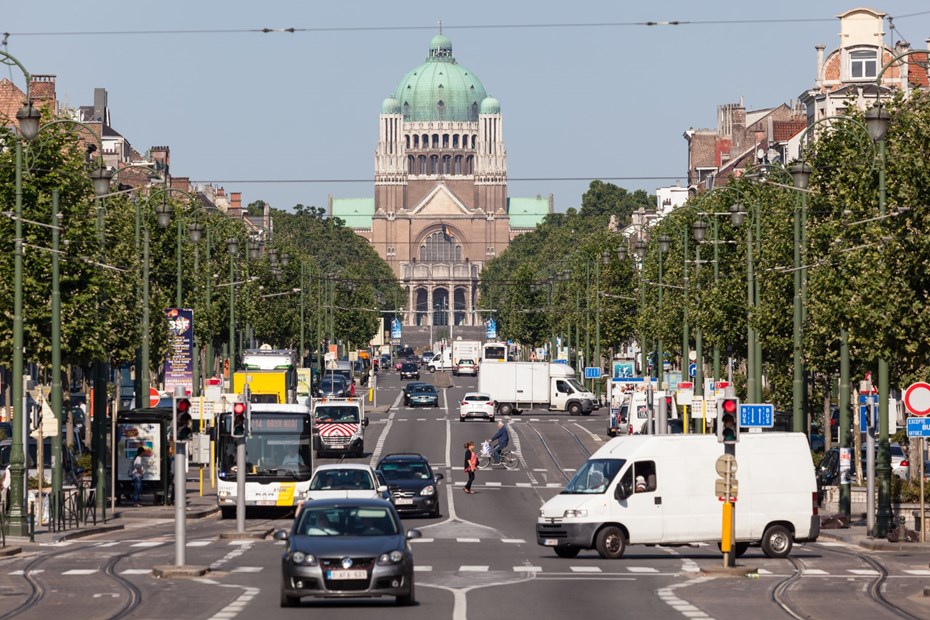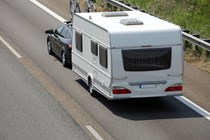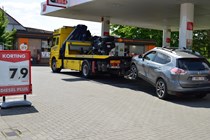You’ll often find yourself just driving in Belgium on the way to another part of Europe, such as Germany or the Netherlands. But it’s a great holiday destination in its own right, especially if you’re going in one of the best cars. After all, Belgium is home to some of Europe’s most beautiful cities, important battlefields and delicious waffles.
Whether you’re driving to somewhere in Belgium itself or just passing through, you need to know the local rules of the road, so you don’t get caught out and fall foul of the law. Many of Belgium’s rules are broadly similar to those for driving in the rest of Europe, but there are some local variations as well.
In this guide, we’re going to go over the key points that you need to have logged in your mind before you set off.
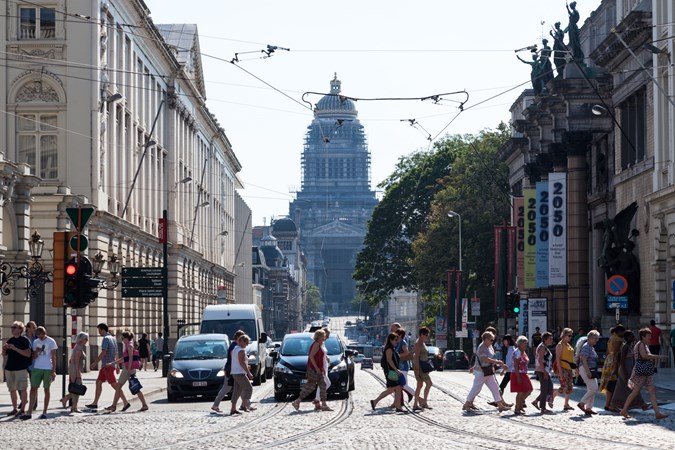
Rules of the road in Belgium
As in the rest of Europe, in Belgium you drive on the right-hand side of the road and overtake on the left. At junctions, cars coming from the right have priority; trams also have priority, regardless of which direction they’re coming from. It’s never worth dicing with a tram, anyway – they can weigh more than a fully-loaded lorry and can do a lot of damage.
Also note that pedestrians have priority at junctions not controlled by signals, and traffic already on a roundabout has priority. You must give way to buses that are indicating to leave a stop – as you should in the UK, as well.
Drivers must hold a full, valid driving licence and be aged over 18 years, even if they’re entitled to drive at a younger age in their home country. Tourists don’t need an international driving permit to drive in Belgium, unless they’re staying for more than 185 days – that’s twice as long as UK passport holders can be in Europe in one stretch, anyway.
Every occupant of your car who has a seatbelt must wear it. The fine for not doing so is €116 (£99).
Belgium is a multi-lingual country and road signs are in French, Dutch or German, depending on which region of the country you’re in. Signs often feature multiple languages, so if you brush up a bit of French or German you should be able to interpret most signs if it’s not obvious what they mean.
Speed limits are shown in units of kilometres per hour; distances are given in metres or kilometres.
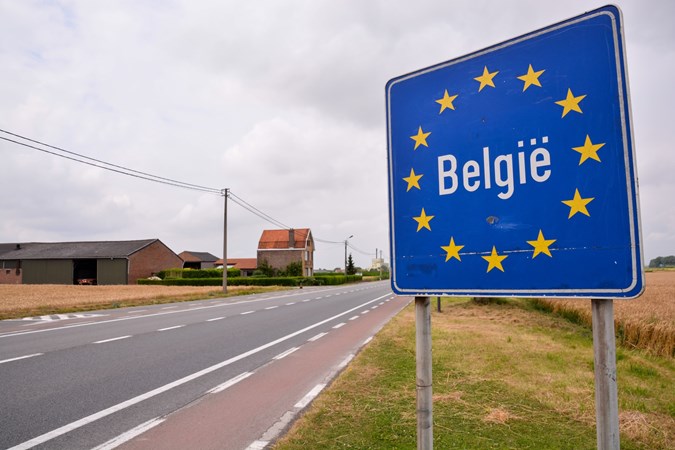
Belgian speed limits
On motorways and dual carriageways, the speed limit in Belgium is 120kph (75mph). On single-carriageway country roads, it’s 90kph (56mph) in the Wallonia and Brussels Capital regions, 70kph (43mph) in the Flemish region.
In town, the speed limit is 50kph (32mph), 30kph (19mph) outside schools and just 20kph (12mph) in residential areas. Speed limits are well signposted, so you should always know what the prevailing limit is on any given stretch of road.
Interestingly, Belgium doesn’t impose lower speed limits on cars towing a caravan or trailer.
Speeding fines in Belgium
The fines imposed for speeding in Belgium depend on which type of road you’re driving on and how much you exceed the limit by. On motorways and ‘open’ country roads, the fine for exceeding the speed limit by up to 10kph (6mph) is €53 (£45); get caught at more than 10kph over the limit and the fine is €53 plus €6 (£5) for every additional 1kph.
The fines are broadly the same if you’re caught speeding in a residential area, but the fine for exceeding for the limit by more than 10kph goes up to €11 (£9) for every additional 1kph. The maximum non-Belgian residents can be fined is €866 (£740).
You can also face on-the-spot fines for other infractions such as driving in a bus lane, and the police can seize cars that are uninsured or have an unsafe load, or if the driver is over the drink-driving limit.
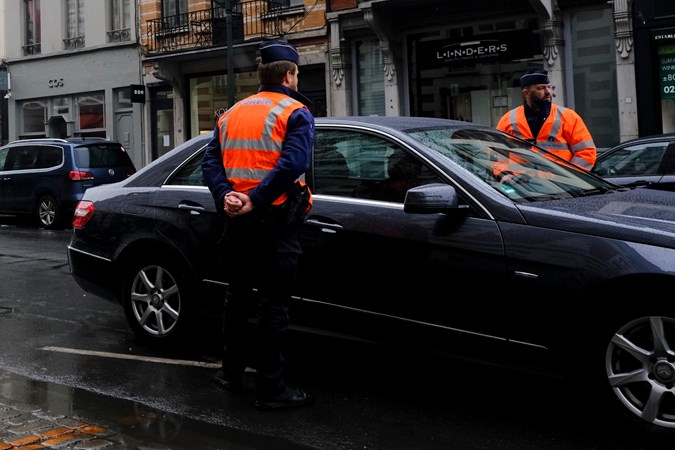
Using a speed camera detector in Belgium
In common with the rest of Europe, Belgium has banned the use of speed camera detectors. So, if you have one, leave it at home. However, you can use sat nav that highlights the location of fixed speed cameras – most other European countries require that feature be turned off.
Drink driving laws in Belgium
Belgium is famous for its beer, but you can’t have much of it before getting behind the wheel. In common with most other European Union countries, Belgium enforces a drink driving limit of 0.05% – that’s a blood alcohol level of 50 milligrams per 100 millilitres of blood. The limit in England, Wales and Northern Ireland is 0.08%.
Belgian police can stage on-the-spot breath tests if they think you’ve been drinking, or have been involved in an accident. Blow 0.05% to 0.08% and your driving licence will be withdrawn for three hours – leaving you unable to drive for that time period. Blow over 0.08% and you’ll be prevented from driving for six hours.
Fines for drink driving range from €179 (£153) to €1,260 (£1,076), depending on the severity of the offence. The police can also seize your car.
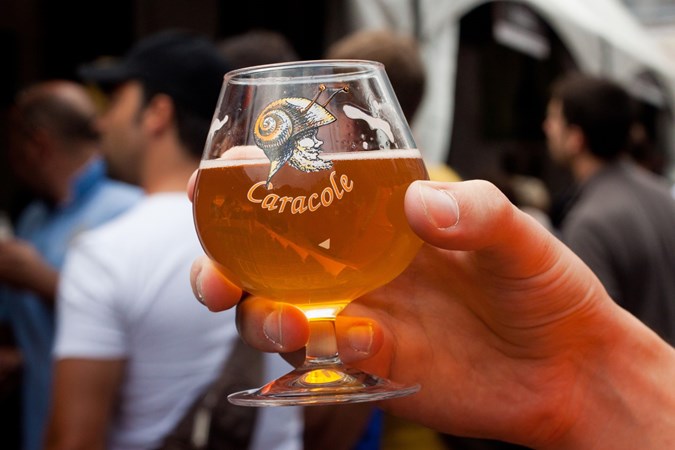
Low emissions zones in Belgium
The Belgian cities of Antwerp, Ghent and Brussels have followed the lead of many others in implementing low emissions zones (LEZ). The three zones allow broadly the same cars to use them, however there are some subtle variations.
Antwerp, Ghent and Brussels allow diesel cars that meet Euro 6 and Euro 5 emissions standard into their LEZs free of charge. Additionally, Antwerp and Ghent allow Euro 4 diesels at a cost of €20 (£17) per day.
For petrol cars, Antwerp and Ghent ban those that don’t at least meet Euro 3 emissions standards, however the cut-off in Brussels is Euro 2. There are no restrictions on electric cars.
Drivers of petrol and diesel cars that fall outside the cut-offs can pay €35 (£30) per day to enter drive the LEZs on a limited number of days a year – eight in Antwerp and Ghent, 24 in Brussels.
There are exemptions for various different types of vehicle – for instance Brussels doesn’t impose a charge on ‘vintage’ cars more than 30 years old. By contrast, cars have to reach 40 years old before they’re exempt from the London ULEZ. Each city has its own LEZ website that you can check your car on to see if it’s exempt from the charges.
Cars showing UK number plates must be registered on the relevant website before driving into any of the LEZs, even if it can enter free of charge. If you have to pay, try to do so in advance through the official LEZ website – not a third party. If that’s not possible, there are pay stations in the cities.
You’ll know you’re entering a Belgian LEZ if you see the sign pictured below.
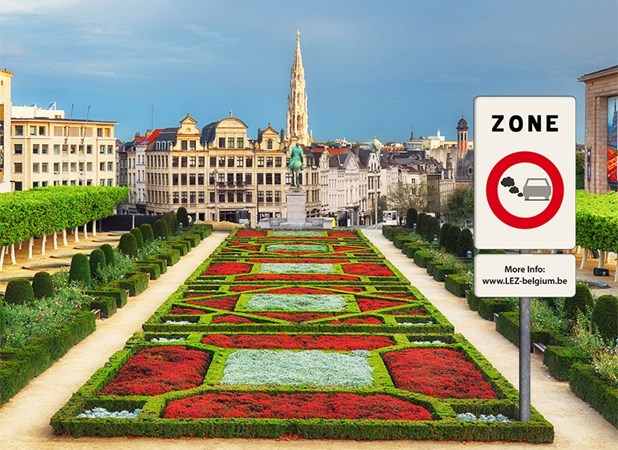
What do I need when driving in Belgium?
You always need a collection of documents and equipment in your car when driving anywhere in Continental Europe. Conveniently, those required in Belgium are essentially the same as you’ll need anywhere else. So, before you leave make sure you have the following:
- Full, valid UK driving licence
- Proof of ID (passport)
- Insurance certificate (no green card needed)
- V5C registration document
- High visibility jackets for every car occupant
- Headlamp beam deflectors
- Warning triangle
- First-aid kit
- Fire extinguisher (optional for vehicles not registered in Belgium)
You can’t take any meat or dairy products into Belgium from another country, and you need a phytosanitary certificate for any fresh fruit, vegetables and plants. So it’s best to wait until you’re actually in Belgium before buying lunch.
Do I need a UK sticker to drive in Belgium?
Now that the United Kingdom has left the European Union, all vehicles registered in Great Britain and Northern Ireland must show at least one UK sticker or number plate badge on the rear. The GB identifier is no longer valid; you don’t have to remove an old one from your car before venturing abroad, but you will have to add a UK one.
Winter tyre requirements in Belgium
Winter tyres are not required in Belgium, however motorists are advised to have them fitted to their cars in the winter months. The authorities recommend that, at the very least, non-winter tyres should have at least 4mm of tread depth to get through cold periods unscathed. You can get a tread depth gauge to measure your tyres.

Belgium does have mountainous areas, such as the vast Ardennes Forest in the south-east of the country. Winters are usually cold and snowy there, so it’d be wise to use winter tyres if that’s your destination.
Emergency numbers in Belgium
If you need to call the emergency services whilst in Belgium, dial 112. That’s a pan-European emergency number that will connect you to the services in whichever country you’re calling from. In Belgium, operators speak English and French, plus their native Dutch, German or Flemish.
Towing in Belgium
You can tow a trailer or caravan in Belgium on your UK driving licence – all UK drivers are now entitled to do so, regardless of whether or not their licence card shows the BE code.
A vehicle trailer/caravan combination can be a maximum of 18.75 metres long and 2.55 metres wide. If the trailer/caravan is wider than the car, extended door mirrors must be used. Towing a car on an A-frame isn’t allowed in Belgium – they can only be towed on an appropriate trailer.

Car insurance in Belgium
Car insurance is compulsory Belgium and your car can be seized if you don’t have any. All UK insurance policies include European cover for a limited period of time, usually 90 days but it can be a lot less than that. Your policy details should tell you what coverage you have; alternatively, call your insurer and ask directly. If your policy doesn’t provide coverage for the duration of your trip, you should be able to pay for an extension.
If you get into an accident while in Belgium, your insurer will work with local recovery companies to get your car repatriated to the UK for repair.
Belgium requires that you have a copy of your car’s insurance certificate to hand while on the road. An insurance green card is no longer needed.
Breakdown cover in Belgium
All the major UK car breakdown services provide European cover, though it’s not included with every policy. Check yours to find out if you are covered; if not, you’ll be able to pay extra to cover your car for the duration of the trip.
If your car does have a breakdown while in Belgium, your service will work with local contractors to get the car recovered and repaired locally if at all possible. If not, it’ll be recovered back to the UK. Paying for that out of your own pocket could cost thousands.

Just so you know, we may receive a commission or other compensation from the links on this website - read why you should trust us.


